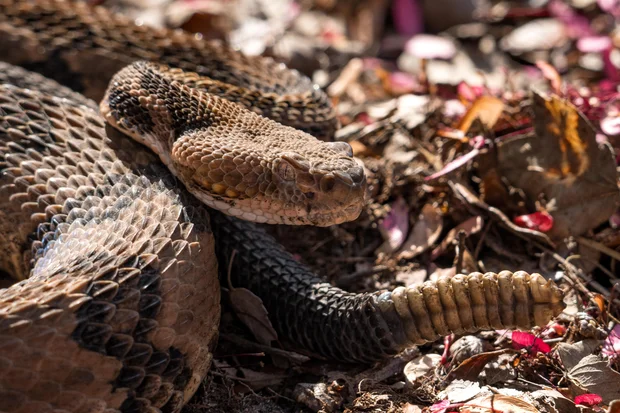Timber rattlesnake bite: What every American needs to know this summer after Savage Gulf State Park incident

A timber rattlesnake sits in the sun in the Okefenokee State Park on March 15, 2024 in Folkston, Georgia. MEGAN VARNER / Getty Images
Summer is the season of adventure — a time when families pack their hiking gear, nature lovers seek the thrill of untouched trails, and outdoor enthusiasts set out to embrace America’s wild beauty. But as the sunshine draws more people into forests, parks, and mountain paths, it also brings an increase in encounters with one of the country’s most dangerous yet often-overlooked summer hazards: the timber rattlesnake.
This reality hit close to home after a recent incident at Savage Gulf State Park in Tennessee, where a visitor suffered a timber rattlesnake bite while hiking. Park officials confirmed the individual was quickly evacuated and treated, but the scare is a stark reminder that these venomous snakes remain active during the warm months, especially in wooded and rocky areas across the eastern United States.
READ ALSO
Snake bites, kills Tennessee hiker at Savage Gulf State Park… here’s how it happened
The timber rattlesnake (Crotalus horridus), recognizable by its patterned skin and distinctive rattle, is most active from late spring through early fall, with summer being peak season. While generally avoiding human interaction, they will strike if startled, stepped on, or cornered. Their venom can cause severe tissue damage, intense pain, and, if untreated, potentially fatal complications.
Why This Matters for Americans This Summer
Across the country, summer hiking, camping, and outdoor sports bring millions into snake habitats. Experts warn that timber rattlesnakes inhabit forests, rural trails, and even suburban edges in states ranging from New York to Texas. For U.S. residents, the message is clear: awareness and preparedness can mean the difference between a safe summer adventure and a life-threatening emergency.
What You Should Do to Stay Safe
-
Wear protective gear — hiking boots and thick socks can reduce bite severity.
-
Stay on marked trails — avoid tall grass and rocky crevices where snakes may hide.
-
Watch your step — snakes blend easily with leaf litter and rocks.
-
Don’t provoke wildlife — never attempt to handle or move a snake.
-
Learn first aid basics — immobilize the limb, keep it at or below heart level, and seek immediate medical help if bitten.
The Bigger Picture
Timber rattlesnake bites are rare, but they can happen anywhere within the snake’s habitat range. As climate change extends warmer seasons and expands snake activity, the risk of encounters is likely to rise. The Savage Gulf State Park incident serves as a reminder that enjoying the great outdoors comes with responsibilities — to respect nature, remain vigilant, and be prepared.
Summer should be a season of joy, not fear. With the right precautions, Americans can continue to explore their parks and trails while keeping the risk of snake encounters to a minimum.

